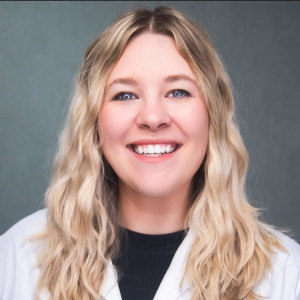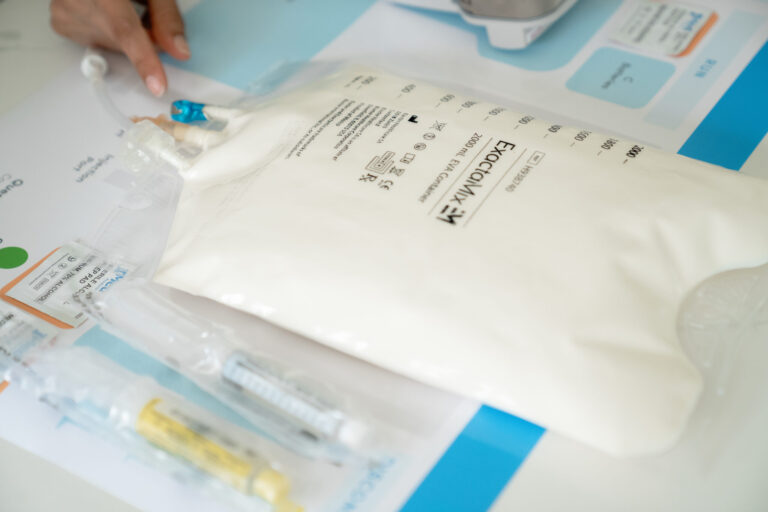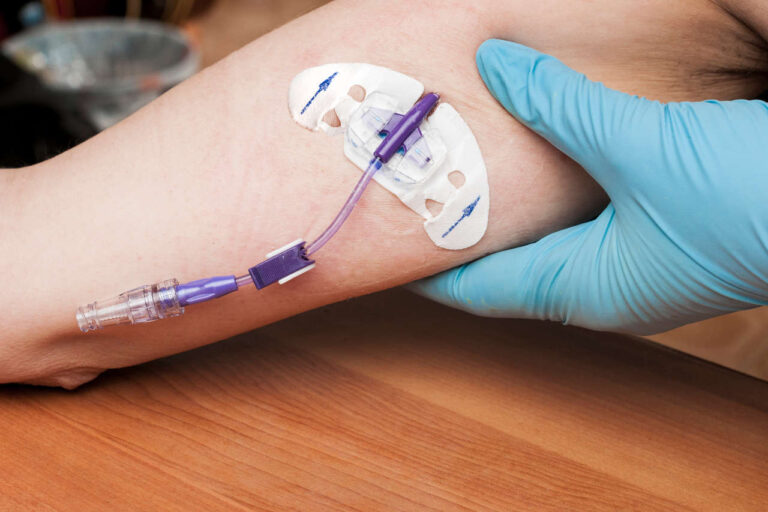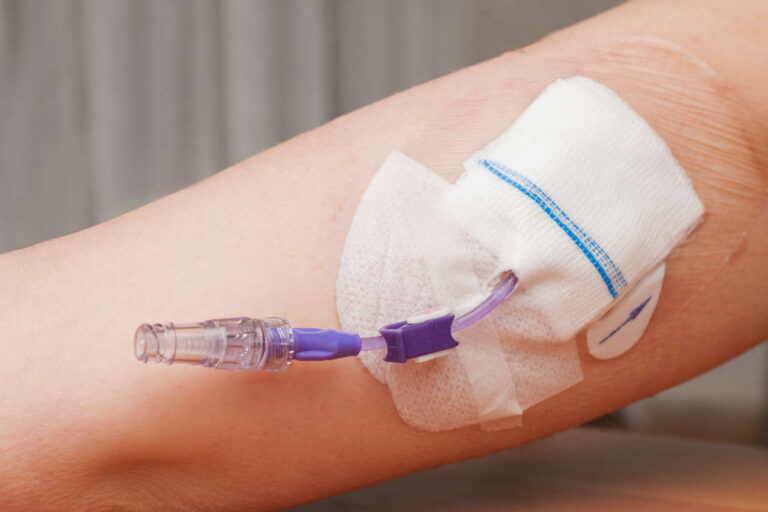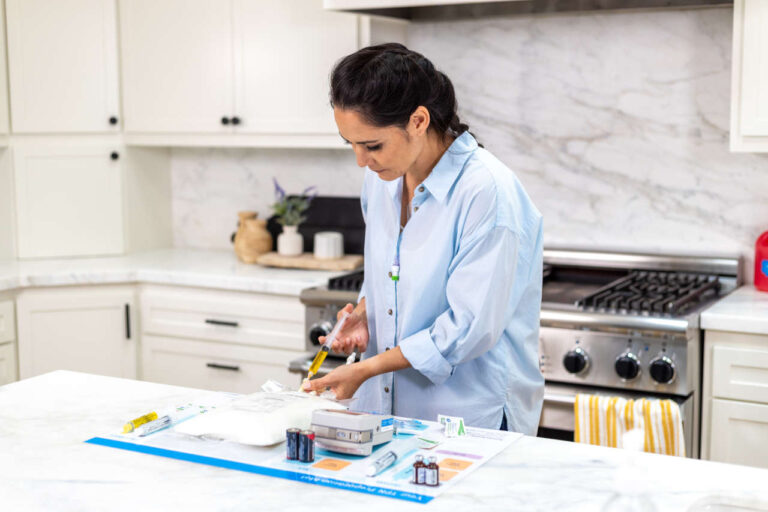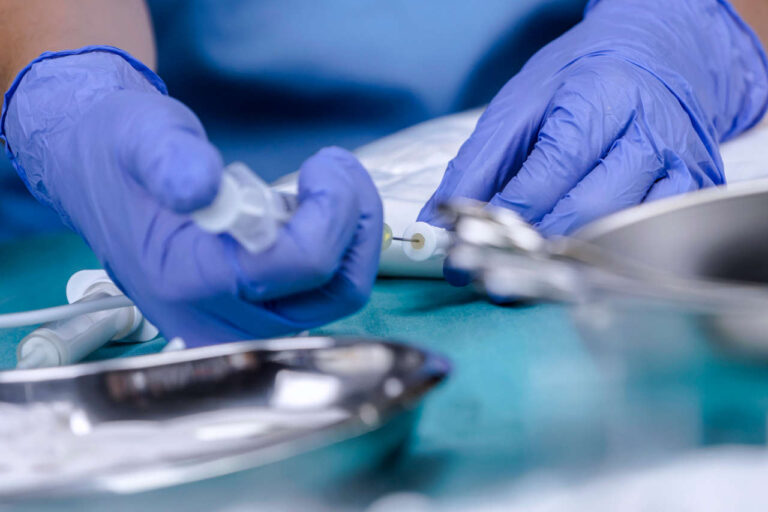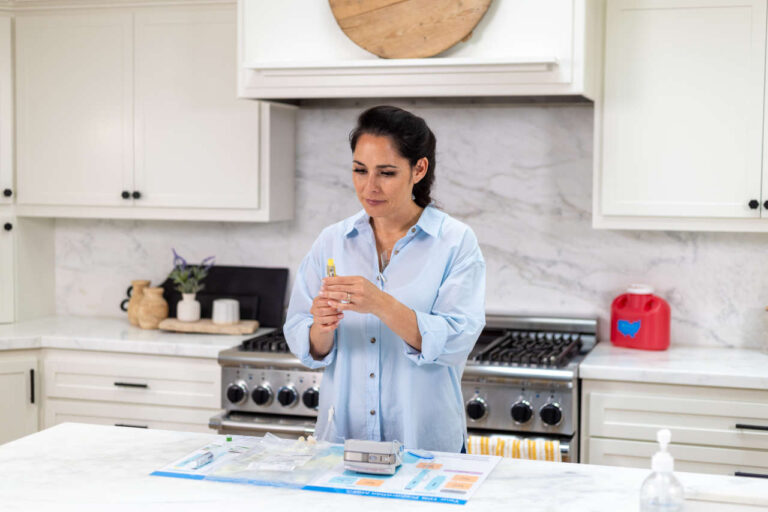
Total parenteral nutrition (TPN) is a life-saving solution for many adults. However, long-term TPN use can have negative effects on the body. The good news is that weaning off TPN is possible.
Always in Stock
Full inventory of IV fluids, ready for youIt might seem daunting at first. However, with careful planning and expert guidance from a healthcare provider, adults can safely transition off TPN and onto oral nutrition.
Below, we will explore the steps and considerations involved in how to wean off TPN in adults. From setting goals to implementing a plan and addressing challenges, we will provide the information necessary for a successful transition.
Step 1: Assess Readiness
When living with TPN, infusions become a part of your daily routine. This can make weaning off TPN challenging for many. So, before anything, a healthcare provider must assess the TPN recipient’s readiness for transition to a regular oral diet.
Here are some of the factors healthcare providers will consider:
1.1. Monitor Nutritional Status
The first step in assessing a patient’s readiness for returning to a regular diet is monitoring their nutritional status.
This step involves evaluating the individual’s:
- Weight
- Vitamins and mineral levels
- Body mass index (BMI)
The patient may be ready to wean off TPN if they demonstrate:
- Stable weight
- Improved nutrition markers
- Adequate wound healing
- Presence of bowel sounds
- The ability to meet their nutritional needs through enteral feeding
1.2. Evaluate the Gastrointestinal Function
Evaluating the gastrointestinal function is essential when considering how to wean adults from TPN. Doctors must ensure a patient’s gastrointestinal tract can absorb nutrients and fluids before switching to feeding using the gut.
This step involves:
- Assessing the individual’s ability to digest and absorb nutrients
- Assessing for signs of gastrointestinal intolerance, such as:
- Bloating
- Vomiting
- Diarrhea
- Constipation
- Malabsorption
- Abdominal pain
Any signs of gastrointestinal complications may indicate a need for further evaluations or adjustments to the enteral feeding plan before weaning someone from TPN.
1.3. Consider Overall Health
Besides nutritional status and gastrointestinal function, doctors must also consider a patient’s overall health status. Some of the factors that can impact the successful transition to enteral feeding include the individual’s:
- Surgical history
- Current medications
- Underlying medical conditions
Healthcare providers must assess these factors by closely monitoring a patient’s:
- Vital signs
- Clinical symptoms
- Fluid intake and output
If the individual is in good overall health, they may be ready to stop relying on TPN for their nutritional needs.
AmeriPharma Specialty Care
Leader In TPN AssistanceStep 2: Set Goals for Weaning From TPN

The next step in how to wean adults from TPN is setting realistic goals and creating a plan. Here are the further steps involved in this stage.
2.1. Establish Realistic Goals for Nutrition and Hydration
First and foremost, a healthcare provider must determine the appropriate caloric and fluid intake needed for the patient to maintain their health.
Healthcare providers can consult dietitians and other professionals to determine the nutritional requirements of each individual. These requirements will differ based on each person’s:
- Age
- Height
- Weight
- Activity level
- Underlying medical conditions
By assessing these factors, healthcare providers can set specific, realistic goals for each individual’s caloric and fluid intake to ensure they receive adequate nutrition and hydration.
2.2. Create a Timeline for Weaning Off TPN
Besides setting specific goals, healthcare providers must create a realistic timeline and decide how they want to wean adults from TPN. Weaning off TPN is a gradual process. Stopping TPN abruptly can lead to rebound hypoglycemia (low blood sugar).
This timeline should be tailored to each individual’s needs and may vary depending on their:
- Nutritional intake
- Current health status
- Ability to tolerate oral nutrition
Successful transition from TPN to oral feeding relies on a feasible plan adjusted regularly to meet the patient’s unique needs. Some may need this transition to be gradual to avoid any potential complications.
2.3. Involve the Individual in the Decision-Making Process
Involving adult patients in the decision-making when setting goals for weaning off TPN is also crucial. Patients should actively participate in their healthcare decisions and have a say in their treatment plans.
An individual’s active participation in the process may include:
- Discussing their preferences for oral nutrition
- Addressing any concerns or limitations they may have
- Providing education and support throughout the weaning process
This approach empowers individuals and increases the overall success of the weaning process.
Step 3: Implement a Transition Plan
Weaning adults from home TPN therapy requires a careful and systematic transition strategy. Here are some of the factors to consider for a successful transition plan.
3.1. Introduce Enteral Nutrition Options
When implementing a transition plan, it’s vital to understand how to wean adults from TPN properly with the best enteral nutrition options. The most common options to start with include:
- Tube feeding
- Blended foods
- Oral supplements
When choosing the best option for a patient, healthcare providers must consider their:
- Preferences
- Medical history
- Nutritional needs
It’s crucial to involve a dietician in the decision-making process and start with slow volumes to allow the gut to adapt to the new diet.
Ask About TPN Home Infusion
3.2. Monitor for Signs of Malnutrition or Dehydration
Another step in implementing a transition plan and successfully weaning adults from TPN is monitoring for signs of malnutrition and dehydration.
Malnutrition occurs if the patient doesn’t receive enough calories and essential nutrients. Symptoms of malnutrition include:
- Fatigue
- Muscle loss
- Unintended weight loss
- Reduced appetite
- Impaired wound healing
Dehydration occurs if the patient doesn’t consume enough fluids. Symptoms of dehydration include:
- Dry mouth
- Dark urine
- Decreased urine output
- Dizziness
- Dry lips or tongue
Regularly monitoring the patient’s weight, lab results, fluid levels, and clinical symptoms is crucial to detect any imbalances and ensure a smooth transition from TPN.
3.3. Adjust the Plan Based on the Patient’s Response
Lastly, weaning adults from TPN requires adjusting the transition plan based on each individual’s responses. Some patients may experience the following gastrointestinal issues when starting an alternative diet:
- Bloating
- Nausea
- Diarrhea
- Constipation
In these cases, healthcare providers must adjust how they wean adults from TPN to ensure a successful transition. For instance, they might need to:
- Change the feeding rate
- Adjust the type of formula used
- Modify the diet to meet the person’s needs better
Regular follow-up appointments with a healthcare provider are essential. During these appointments, they can assess the patient’s progress and modify the transition plan if needed.
Step 4: Evaluate Progress
After implementing a plan to wean adults from TPN, healthcare providers must evaluate their progress to ensure a smooth transition. Here are the steps involved in this stage of the process:
4.1. Regularly Assess the Patient’s Nutritional Intake and Absorption
Regularly assessing the patient’s nutritional intake and absorption is how healthcare providers can wean adults from TPN to ensure a smooth transition. This assessment can include an evaluation of the patient’s:
- Fluid intake
- Caloric intake
- Protein intake
Healthcare providers can keep track of a patient’s dietary intake by:
- Examining their food journal
- Monitoring their weight fluctuations
- Assessing any signs of nutrient deficiency or malabsorption issues
4.2. Monitor for Complications and Side Effects
While TPN has several risks, weaning off it may also cause complications and side effects. These side effects are even more prominent in those who have been on TPN for an extended period.
Some of the complications patients might experience include:
- Dehydration
- Low blood sugar
- Refeeding syndrome
- Electrolyte imbalances
Physicians can control any complications or side effects by regularly checking the essential nutrient levels in an individual’s blood sample and evaluating their vital signs.
Get Financial Assistance for TPN
Step 5: Address Challenges and Barriers

The final step involved in how to wean adults from TPN is addressing the physical and mental challenges.
5.1. Deal With Resistance From the Patient
Weaning off TPN may be a scary concept to many patients since they have become dependent on it. They may be anxious about transitioning to oral nutrition.
Therefore, healthcare providers must have a plan for dealing with this resistance. They must:
- Offer emotional support
- Take the time and listen to the patient’s concerns
- Educate individuals about the weaning process and its potential benefits
Making patients feel heard can reduce some of their worries and make the transition easier.
5.2. Manage Gastrointestinal Issues
Another challenge when weaning off TPN in adults is managing gastrointestinal issues. People transitioning from TPN to a regular diet may experience the following:
- Nausea
- Bloating
- Diarrhea
- Vomiting
- Constipation
Doctors can recommend medications and supplements to alleviate these symptoms and make the transition less challenging.
5.3. Provide Resources for Managing Enteral Nutrition at Home
Finally, doctors must provide patients with the necessary resources and support to ensure a smooth transition.
Just as they should guide patients through troubleshooting TPN and recognizing side effects when starting treatment, they must help them navigate the transition journey.
Healthcare providers can help patients by creating individualized meal plans for them and addressing their issues.
Receive At-Home TPN Therapy With AmeriPharma® Specialty Pharmacy
Now that you know how to wean from TPN, you’re ready to make the transition. If you’re not weaning off TPN but only starting your treatments, AmeriPharma® Specialty Pharmacy can help.
We deliver TPN home infusion materials to your door in discreet packaging and help you troubleshoot any problems.
Our specialty pharmacy can also send specialized infusion nurses to your home to administer the treatment. You can meet your dietary needs with our full-service coordination, 24/7/365 support, and copay assistance.
Contact us now to speak to a patient navigator and receive specialty care at home.
